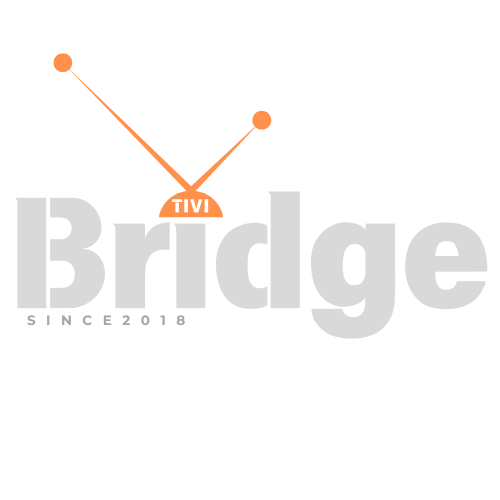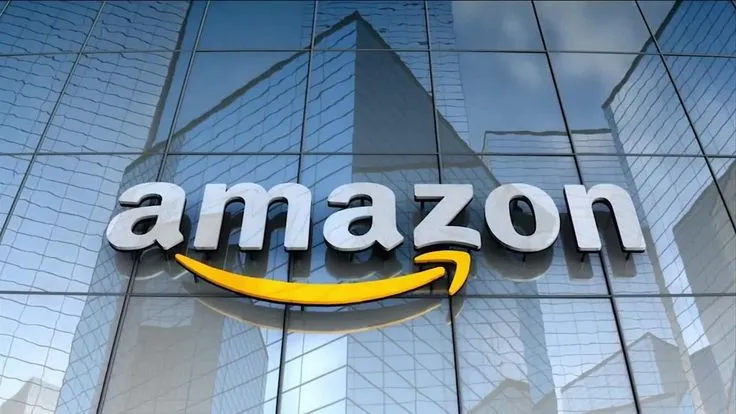Revolutionizing How We Consume Television Content in the Digital Age
What is IPTV? Understanding the Internet TV In today’s rapidly evolving digital landscape, traditional television broadcasting is experiencing a seismic shift. The emergence of IPTV real time review technology has transformed how millions of viewers worldwide access and consume their favorite content. Whether you’re curious about cutting the cord or simply want to watch IPTV online free, understanding this revolutionary technology is crucial for making informed entertainment decisions.
Internet Protocol Television, commonly known as IPTV, represents a paradigm shift from conventional broadcasting methods. Unlike traditional cable or satellite TV that relies on radio frequency signals, IPTV delivers television content through internet protocols over a managed or dedicated network. This innovative approach has gained tremendous traction, with industry experts predicting continued explosive growth in the coming years.
What Exactly is IPTV Technology?
IPTV stands for Internet Protocol Television, a sophisticated system that delivers television programming and video content using the Internet Protocol (IP) suite over a packet-switched network such as a LAN or the internet. This technology fundamentally differs from traditional terrestrial, satellite, and cable television formats by leveraging internet infrastructure to stream content directly to viewers’ devices.
The core principle behind IPTV involves converting traditional television signals into digital data packets that can be transmitted over internet networks. These packets are then reassembled at the receiving end to recreate the original video and audio content. This process enables unprecedented flexibility in content delivery, allowing viewers to access programming on-demand, pause live television, and even rewind broadcasts.
Key Components of IPTV Systems
The IPTV ecosystem consists of several interconnected components working harmoniously to deliver seamless viewing experiences:
Content Acquisition and Processing: IPTV providers acquire content from various sources, including broadcast networks, production studios, and independent creators. This content undergoes digital encoding and compression to optimize bandwidth usage while maintaining quality.
Content Delivery Network (CDN): A robust CDN infrastructure ensures efficient content distribution across geographical locations. This network minimizes latency and buffering issues, providing smooth streaming experiences regardless of viewer location.
Middleware Platform: The middleware serves as the brain of IPTV systems, managing user authentication, content access control, billing, and interactive features. This component enables personalized viewing experiences and advanced functionality.
Set-Top Boxes and Client Applications: End-user devices, including dedicated set-top boxes, smart TVs, smartphones, tablets, and computers, serve as access points for IPTV content. These devices decode incoming data streams and present content in user-friendly interfaces.
Types of IPTV Services Available Today
The IPTV landscape encompasses three primary service categories, each catering to different viewing preferences and consumption patterns:
Live Television Broadcasting
Live IPTV services replicate traditional television broadcasting by streaming real-time content over internet networks. Viewers can access IPTV real time channels featuring news, sports, entertainment, and educational programming as it happens. This service type maintains the familiar television viewing experience while leveraging internet infrastructure for improved reliability and quality.
Live IPTV broadcasting offers several advantages over conventional methods, including superior picture quality, reduced signal interference, and the ability to integrate interactive features. Many providers offer comprehensive channel packages rivaling traditional cable and satellite offerings.
Video on Demand (VOD)
Video on Demand represents one of IPTV’s most compelling features, allowing viewers to access extensive content libraries at their convenience. VOD services enable users to select and watch movies, TV series, documentaries, and other programming whenever desired, eliminating the constraints of traditional broadcast schedules.
This service category has revolutionized content consumption patterns, empowering viewers to create personalized viewing schedules. Premium VOD services often feature exclusive content, early access to new releases, and curated recommendations based on viewing history and preferences.
Time-Shifted Television
Time-shifted television combines live broadcasting with on-demand flexibility, allowing viewers to pause, rewind, and record live programming for later viewing. This innovative approach addresses modern lifestyle demands, ensuring viewers never miss important content due to scheduling conflicts.
Advanced time-shifting features include catch-up TV services, enabling access to previously aired programs for extended periods. Some providers offer cloud-based DVR functionality, eliminating the need for physical storage devices while providing virtually unlimited recording capacity.
How IPTV Technology Works Behind the Scenes
Understanding IPTV’s technical foundation helps appreciate its capabilities and advantages over traditional broadcasting methods. The technology relies on sophisticated protocols and infrastructure to deliver high-quality content efficiently.
Signal Acquisition and Processing
The IPTV journey begins with content acquisition from various sources, including live television broadcasts, pre-recorded media, and streaming content providers. Acquired signals undergo digital conversion and encoding using advanced compression algorithms like H.264 or H.265, optimizing file sizes while preserving quality.
Content processing involves several stages, including format standardization, quality enhancement, and metadata integration. These processes ensure compatibility across different devices and networks while enabling advanced features like subtitles, multiple audio tracks, and interactive elements.
Network Infrastructure Requirements
IPTV demands robust network infrastructure capable of handling substantial data volumes with minimal latency. Internet Service Providers (ISPs) must maintain adequate bandwidth capacity and quality of service (QoS) standards to support seamless streaming experiences.
The network architecture typically employs multicast technology for live content distribution, reducing bandwidth consumption by transmitting single data streams to multiple recipients simultaneously. This approach significantly improves efficiency compared to unicast methods used by traditional internet streaming.
Content Delivery and Quality Management
Modern IPTV systems implement adaptive bitrate streaming, automatically adjusting video quality based on available bandwidth and device capabilities. This technology ensures optimal viewing experiences across varying network conditions, from high-speed fiber connections to mobile networks.
Quality management systems continuously monitor network performance and viewer satisfaction metrics, enabling proactive optimization and issue resolution. Advanced analytics help providers identify potential problems before they impact user experiences.
Advantages of IPTV Over Traditional Broadcasting
IPTV technology offers numerous compelling advantages that have driven its rapid adoption across global markets. These benefits address longstanding limitations of traditional broadcasting methods while introducing innovative capabilities.
Superior Content Quality and Reliability
IPTV delivers consistently high-quality video and audio content, often surpassing traditional broadcast standards. Digital transmission eliminates common issues like signal degradation, interference, and weather-related disruptions that plague conventional television services.
The technology supports various resolution formats, including standard definition (SD), high definition (HD), and ultra-high definition (4K/8K), ensuring optimal viewing experiences across different display devices. Advanced audio codecs provide immersive surround sound experiences that enhance content enjoyment.
Enhanced Interactivity and User Control
Unlike passive traditional television viewing, IPTV enables extensive interactivity and user control. Viewers can pause, rewind, fast-forward, and record live programming, creating personalized viewing experiences that align with individual schedules and preferences.
Interactive features extend beyond basic playback controls to include program guides, content recommendations, social media integration, and multi-screen viewing capabilities. These enhancements transform television from a passive medium into an engaging, interactive experience.
Cost-Effectiveness and Flexibility
IPTV services often provide superior value compared to traditional cable and satellite packages. Providers can offer competitive pricing due to reduced infrastructure costs and the ability to target specific demographic segments with tailored content packages.
Subscription flexibility allows viewers to customize their service packages, paying only for desired content categories rather than comprehensive bundles containing unwanted channels. This approach reduces overall entertainment costs while improving content relevance.
Global Content Access
IPTV transcends geographical boundaries, enabling access to international content that might be unavailable through traditional local broadcasters. This global reach exposes viewers to diverse cultural perspectives, languages, and entertainment formats from around the world.
Many IPTV providers offer multi-language support, subtitle options, and regional content libraries, catering to increasingly diverse audience demographics in multicultural societies.
Popular IPTV Platforms and Providers
The IPTV marketplace features numerous providers offering varying service levels, content libraries, and pricing structures. Understanding the landscape helps consumers make informed decisions based on their specific needs and preferences.
Premium IPTV Services
Established telecommunications companies and media conglomerates operate premium IPTV services featuring extensive content libraries, reliable infrastructure, and comprehensive customer support. These services typically require subscription fees but offer professional-grade quality and legal content distribution.
Premium providers invest heavily in content acquisition, licensing agreements with major studios and networks, and infrastructure development to ensure superior viewing experiences. They often provide additional services like cloud storage, multi-device support, and family-friendly content controls.
Affordable IPTV Solutions
The market also includes budget-friendly IPTV providers catering to cost-conscious consumers seeking basic television services without premium pricing. For instance, TiviBridge has established itself as one of the best IPTV providers and top-rated services in May 2025, offering comprehensive channel packages at competitive prices while maintaining reliable service quality.
These providers focus on delivering essential television content at accessible price points, making IPTV technology available to broader demographic segments. They often emphasize value propositions like extensive channel selections, multiple device compatibility, and flexible subscription terms.
Xtream IPTV and Advanced Platforms
Xtream IPTV represents advanced IPTV platform technology that enables sophisticated content management and delivery capabilities. This platform architecture supports complex features like user management, content organization, and advanced streaming protocols.
Xtream-based services often provide enhanced functionality including electronic program guides (EPG), video-on-demand libraries, and catch-up television features. The platform’s flexibility allows providers to customize interfaces and features according to their target audience requirements.
Legal Considerations and Content Licensing
The IPTV industry operates within complex legal frameworks governing content distribution, copyright protection, and consumer rights. Understanding these considerations is crucial for both providers and consumers navigating the evolving regulatory landscape.
Content Licensing and Rights Management
Legitimate IPTV providers must secure proper licensing agreements with content creators, studios, and distribution networks before offering programming to subscribers. These agreements define usage rights, geographical restrictions, and revenue sharing arrangements that govern content availability.
Rights management systems ensure compliance with licensing terms, preventing unauthorized access to protected content and enforcing geographical restrictions. Advanced digital rights management (DRM) technologies protect content from piracy while enabling legitimate access for paying subscribers.
Looking for Premium Channels, Sports, and 8K Streaming?
Don’t miss out on these top-rated IPTV services – all at unbeatable prices!
🔥 TiviBridge – Ideal for sports lovers & international content
🎬 Iptvbridge – Perfect for live TV, movies & entertainment
💰 TiviPlanet – Best value for budget-conscious streamers
🚀 Start Your IPTV Business Today!
Get instant access to a powerful Reseller IPTV Panel with competitive pricing, advanced features, and 24/7 support. Join TiviBridge and grow your own IPTV empire with ease!
👉 Start your FREE trial now and elevate your viewing experience with seamless, high-quality streaming!
Regulatory Compliance and Consumer Protection
IPTV providers must comply with telecommunications regulations, broadcasting standards, and consumer protection laws in their operating jurisdictions. These requirements cover service quality standards, privacy protection, accessibility features, and fair business practices.
Regulatory compliance extends to content standards, ensuring age-appropriate programming classification, cultural sensitivity, and adherence to local broadcast regulations. Providers must implement robust systems for content monitoring and user safety protection.
Intellectual Property Protection
The digital nature of IPTV content makes intellectual property protection particularly challenging and important. Providers must implement comprehensive security measures to prevent content piracy, unauthorized redistribution, and illegal access to premium programming.
Advanced encryption technologies, secure streaming protocols, and user authentication systems form multi-layered protection strategies. These measures balance content security with user convenience, ensuring legitimate subscribers enjoy seamless access while preventing unauthorized usage.
Technical Requirements for IPTV Viewing
Successful IPTV implementation requires specific technical infrastructure and equipment to ensure optimal viewing experiences. Understanding these requirements helps consumers prepare their home networks and select appropriate devices.
Internet Connection Requirements
IPTV services demand reliable, high-speed internet connections with sufficient bandwidth to support continuous video streaming. Standard definition content typically requires 2-5 Mbps, while high definition streams need 8-15 Mbps, and 4K content may require 25-50 Mbps or more.
Connection stability is equally important as raw speed, with consistent bandwidth availability preventing buffering interruptions and quality degradation. Many providers recommend dedicated connections or quality of service (QoS) configurations to prioritize IPTV traffic over other internet activities.
Compatible Devices and Equipment
IPTV content can be accessed through various devices, including dedicated set-top boxes, smart TVs, gaming consoles, computers, tablets, and smartphones. Each device type offers different capabilities and user experience characteristics.
Dedicated IPTV set-top boxes often provide the most comprehensive functionality, including advanced remote controls, optimized user interfaces, and seamless integration with television displays. Smart TV applications offer convenience but may have limited features compared to dedicated hardware solutions.
Network Configuration and Optimization
Home network configuration significantly impacts IPTV performance, with factors like router quality, Wi-Fi signal strength, and network congestion affecting viewing experiences. Wired connections typically provide superior stability compared to wireless alternatives, particularly for high-definition content.
Network optimization techniques include Quality of Service (QoS) configuration, bandwidth allocation, and interference minimization. Advanced users may implement dedicated IPTV networks or VLAN configurations to isolate streaming traffic from other internet activities.
Future Trends and Innovations in IPTV
The IPTV industry continues evolving rapidly, with emerging technologies and changing consumer preferences driving innovation and service enhancement. Understanding these trends helps predict future developments and investment opportunities.
Artificial Intelligence Integration
Artificial intelligence and machine learning technologies are increasingly integrated into IPTV platforms, enabling personalized content recommendations, automated quality optimization, and predictive analytics. AI algorithms analyze viewing patterns, preferences, and behavior to curate customized programming suggestions.
Advanced AI applications include real-time content analysis, automated subtitling and translation services, and intelligent bandwidth management. These technologies enhance user experiences while reducing operational costs for service providers.
5G Network Integration
The deployment of 5G wireless networks promises to revolutionize mobile IPTV consumption, offering unprecedented bandwidth capacity and low latency connectivity. This technology enables high-quality streaming on mobile devices without traditional network limitations.
5G integration facilitates new use cases like augmented reality (AR) and virtual reality (VR) content delivery, multi-angle live sports viewing, and ultra-low latency interactive programming. These capabilities expand IPTV beyond traditional television boundaries into immersive entertainment experiences.
Cloud-Based Infrastructure
Cloud computing technologies are transforming IPTV infrastructure, enabling scalable, cost-effective content delivery networks that adapt dynamically to demand fluctuations. Cloud-based systems reduce hardware requirements while improving service reliability and geographic reach.
Edge computing integration brings content processing closer to end users, reducing latency and improving streaming quality. This approach is particularly beneficial for live content delivery and interactive applications requiring real-time responsiveness.
Troubleshooting Common IPTV Issues
Despite technological advances, IPTV users may occasionally experience technical difficulties that impact viewing experiences. Understanding common problems and their solutions helps maintain optimal service performance.
Buffering and Quality Issues
Buffering problems typically result from insufficient bandwidth, network congestion, or server overload. Solutions include checking internet connection speeds, reducing concurrent network usage, and contacting service providers about capacity issues.
Quality degradation may indicate bandwidth limitations or device compatibility problems. Users should verify their internet connection meets service requirements and ensure their devices support required video codecs and resolution formats.
Connection and Authentication Problems
Login difficulties or connection failures often stem from incorrect credentials, expired subscriptions, or server maintenance. Users should verify their account status, check for service announcements, and ensure their authentication information is current.
Network configuration issues may prevent proper IPTV functionality, particularly when using VPN services or complex router setups. Consulting with technical support can help identify and resolve configuration conflicts.
Device Compatibility Concerns
Compatibility issues may arise when using older devices or unsupported applications. Users should verify their devices meet minimum system requirements and update software to the latest versions when possible.
Alternative viewing options, such as web browsers or mobile applications, may provide solutions when primary devices experience compatibility problems.
Frequently Asked Questions About IPTV
What is the difference between IPTV and regular streaming services?
IPTV differs from traditional streaming services primarily in its delivery method and content structure. While streaming services like Netflix deliver content over the open internet, IPTV typically uses managed networks with dedicated infrastructure for more reliable service quality. IPTV also offers live television channels alongside on-demand content, more closely resembling traditional television packages.
Is IPTV legal to use?
IPTV technology itself is completely legal when used with legitimate service providers who have proper content licensing agreements. However, some illegal IPTV services offer pirated content without authorization, which violates copyright laws. Users should always choose reputable providers with proper licensing to ensure legal compliance.
Can I watch IPTV on multiple devices simultaneously?
Most IPTV providers offer multi-device support, allowing subscribers to access content on various devices including smart TVs, smartphones, tablets, and computers. However, simultaneous streaming limitations vary by provider and subscription plan. Premium packages typically allow more concurrent streams than basic plans.
What internet speed do I need for IPTV?
Internet speed requirements depend on content quality and the number of simultaneous streams. Standard definition requires 2-5 Mbps per stream, high definition needs 8-15 Mbps, and 4K content requires 25-50 Mbps or more. Households with multiple concurrent streams should calculate total bandwidth needs accordingly.
How reliable is IPTV compared to cable TV?
IPTV reliability depends heavily on internet connection quality and service provider infrastructure. With stable, high-speed internet connections, IPTV can be extremely reliable and often superior to traditional cable in terms of picture quality and feature availability. However, internet outages will affect IPTV service, unlike traditional broadcast methods.
Can I record shows with IPTV?
Many IPTV services offer digital video recorder (DVR) functionality, including cloud-based recording that doesn’t require physical storage devices. Features vary by provider but may include pause, rewind, and time-shifting capabilities for live programming. Some services offer extensive catch-up libraries as an alternative to traditional recording.
Conclusion: Embracing the Future of Television Entertainment
The revolutionary impact of IPTV technology on modern entertainment consumption cannot be overstated. From enabling viewers to watch IPTV online free through various platforms to providing access to IPTV real time channels from around the globe, this technology has fundamentally transformed how we experience television content.
As we’ve explored throughout this comprehensive guide, IPTV offers numerous compelling advantages over traditional broadcasting methods, including superior quality, enhanced interactivity, cost-effectiveness, and unprecedented flexibility. The technology continues evolving rapidly, with innovations like artificial intelligence integration, 5G network deployment, and cloud-based infrastructure promising even more exciting developments ahead.
For consumers considering the transition to IPTV, the current landscape offers diverse options catering to various needs and budgets. Whether seeking premium services with extensive content libraries or budget-friendly alternatives like those offered by providers such as TiviBridge, the cheapest IPTV provider in the world, viewers can find solutions that align with their preferences and requirements.
The future of television entertainment lies in the continued evolution and adoption of IPTV technology. As internet infrastructure improves globally and innovative features emerge, IPTV will likely become the dominant method for content delivery and consumption. Understanding this technology today positions consumers to make informed decisions and fully leverage the benefits of this remarkable innovation.
Are you ready to explore the exciting world of IPTV and discover how it can enhance your entertainment experience? Consider researching reputable providers, evaluating your technical requirements, and taking the first step toward embracing the future of television technology. Share your thoughts and experiences with IPTV in the comments below, and don’t forget to explore additional resources to stay informed about this rapidly evolving industry.











